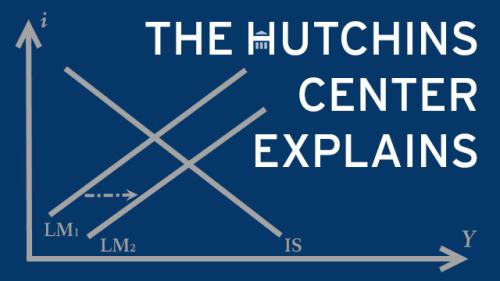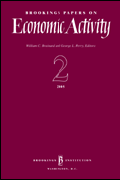What’s the latest thinking in fiscal and monetary policy? The Hutchins Roundup keeps you informed of the latest research, charts, and speeches. Want to receive the Hutchins Roundup as an email? Sign up here to get it in your inbox every Thursday.
Persistently loose monetary policy increases risk of crisis
Maximilian Grimm and Moritz Schularick of the University of Bonn and Òscar Jordà and Alan M. Taylor of the University of California, Davis, examine data for 18 countries between 1870 and 2020 to estimate how much loose monetary policy increases the risk of financial crises. The authors measure the monetary policy stance by averaging the difference between the policy and natural rate of interest over five years. They find that when the policy stance is loose by 1 percentage point, the risk of a financial crisis between five and seven years out increases by 5.5 percentage points, while the risk of a crisis between seven and nine years out increases by 15.5 percentage points. The unconditional probability of a financial crisis over any three-year horizon is 10.5%. The authors say that accommodative monetary policy leads to credit growth and increased asset prices in the medium term, consistent with theory and prior evidence on the transmission of loose policy to financial instability.
Wage increases for low-income workers counteract previous trend of rising inequality
David Autor of the Massachusetts Institute of Technology and Annie McGrew and Arindrajit Dube of the University of Massachusetts find that wages increased disproportionately for workers at the bottom of the income distribution during the pandemic. The authors argue that tight labor markets increased competition for low-wage workers, “reducing employer market power and spurring rapid relative wage growth among young non-college workers.” Wage increases were especially pronounced among workers under 40, those without college degrees, and those who changed jobs. Large nominal wage increases for low-wage workers led to wage compression between the 90th and 10th percentile, reversing “approximately one-quarter of the rise in 90-10 wage inequality since 1980.”
Larger employment losses during recessions associated with slower recovery
Exploiting the variation in local labor market performance during recessions over the 1973-2009 period, Brad Hershbein of the W.E. Upjohn Institute for Employment Research and Bryan Stuart of the Federal Reserve Bank of Philadelphia find that areas that suffer more job loss during a recession have persistently lower employment and population in the post-recession period relative to other areas. Specifically, metropolitan areas that experience 10% higher job loss during a recession than other areas have 11% lower employment seven to nine years after the recession trough. The authors also find that larger employment losses in a region are associated with persistently lower employment-to-population ratios and earnings per capita relative to other areas in the post-recession period.
Chart of the week: Job openings and quits rates are falling
Chart courtesy of Jason Furman
Quote of the week:
“We are seeing the effects of our policy actions on demand in the most interest sensitive sectors of the economy. It will take time, however, for the full effects of monetary restraint to be realized, especially on inflation. In light of the cumulative tightening of monetary policy and the lags with which monetary policy affects economic activity and inflation, the committee slowed the pace of interest rate increases over its past two meetings. We will continue to make our decisions meeting by meeting taking into account the totality of the incoming data and their implications for the outlook for economic activity and inflation. Although inflation has been moderating in recent months, the process of getting inflation back down to 2% has a long way to go and is likely to be bumpy,” says Jerome Powell, Chair of the Federal Reserve Board.
“As I mentioned, the latest economic data have come in stronger than expected, which suggests that the ultimate level of interest rates is likely be higher than previously anticipated. If – and I stress no decision has been made on this – but if the totality of the data were to indicate that faster tightening is warranted, we’d be prepared to increase the pace of rate hikes. Restoring price stability will likely require that we maintain a restrictive stance of monetary policy for some time.”
The Brookings Institution is financed through the support of a diverse array of foundations, corporations, governments, individuals, as well as an endowment. A list of donors can be found in our annual reports published online here. The findings, interpretations, and conclusions in this report are solely those of its author(s) and are not influenced by any donation.












Commentary
Hutchins Roundup: Monetary policy and financial crises, pandemic-era wages, and more
March 9, 2023